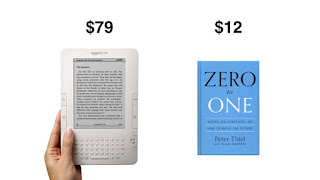The Tudor is one of five used watches that my father owns, including an Omega Seamaster from 1949 that belonged to my grandfather. Watching my father handle these timepieces sparked my own interest in them. If, one day, I should inherit his collection, I hope to build on it.
Used watches inhabit a fascinating planet within the horological universe and are among the more interesting objects to collect. Researching and choosing the right watch, one that matches your personality and tastes, can double up as exercise in self-discovery. Going back in time teaches you about history, too. But be warned; the pursuit of used watches is not to be undertaken casually.
Aashdin Billimoria, 43, who has been collecting used watches since he was 13, says the rule of thumb is that a watch has to be at least 25 years old to be considered used. Any younger, and it is just second-hand. He recommends starting with a small budget and seeking out the lesser known Swiss brands, because those are value for money and tend to be authentic, so the risk of losing your money is much lower. “You can’t go wrong with a Swiss watch. And If you go for the lesser known ones, you won’t get a duplicate because it costs too much to make a fake.”
Once you have grown familiar with Swiss watches, only then does he recommend moving up the ladder. “If you are a first time buyer and want to buy an Omega, you are taking a risk,” Billimoria says.
What you need to be most careful of are the so-called Frankenwatches, the monsters of the used world. They are exactly what the name suggests, watches made by stripping others of their best parts e.g. taking the movement from one Omega, the dial from another and the case from a third and putting them together. In the horological world, this sort of butchery is anathema. Buying a used watch is also a matter of trust. Avoid dodgy sources and make sure the watch is in excellent working condition before ponying up.
While the used watch market is a niche one, the used market is also a lifeline for watches that failed the first time around. Billimoria recounts the tale of the Memomatic, an alarm watch made by Omega in the 1970s. The watch was released during the quartz revolution. Not only did it fail to watch Casio watches for accuracy; but it was also roughly 50 times more expensive. Only 25,000 Memomatics were produced, which makes them a collector’s item. According to Billimoria, you cannot get a Memomatic for less than Rs 1 lakh today.
Used Hamilton watches is another example. An anti-magnetic watch that was made for those who worked around electromagnetic fields, its low sales caused Hamilton to discontinue the model in 1988 after numerous configurations had been released. Today, the used version costs around Rs 13 lakh.
Among the more commonly collected used watches are the military watches issued by the British during World War II. They are identified by the broad arrow logo and all the watches have WWW stamped on the back, which has led to some confusion. “It is thought this means World War Watches,” Billimoria says. “No. It stands for Wrist Watch Waterproof.”
If you are going to collect useds watches, you have to invest the time to take care of them. Since the movements are mechanical, they need to be wound and given “wrist time”. Billimoria wears a watch on each wrist while having his morning cup of tea and rotates them daily to keep them ticking. He owns about 200, so this is quite the exercise. If you can’t give them wrist time, then at least wind them regularly and keep them in the cupboard. They also need to be cleaned about once a month. Getting original parts is a little trickier. The easier ones to get are parts for the Swiss brands that use the ETA movement,” says Billimoria, who sometimes buys used watches that don’t work just for their parts.
In the age of smartphones and smart watches, the question is why own a used watch at all? The answer is that each watch comes with its own character and history. For instance, you could own a watch that belonged to a World War II fighter pilot, complete with proof. Then there are the tales to tell, like the one Billimoria spins about the iconic Reverso movement created by Jaeger LeCoultre (JLC). It turns out the concept came from colonial India. British officers playing polo would often find their watches had been damaged in the course of a game. The major knew the JLC designer and asked him to design a watch that would not get damaged. “The designer took the concept to France and they came up with the Reverso, which, when you flip it, has a metal case that protects the watch in case the ball hits it.”
Perhaps the biggest thrill of collecting used watches is the hunt. If you want a particular watch, the clock could tick for years before you stumble across the genuine article. “When you finally get the watch, that joy is in a different league,” Billimoria says. “That joy you will not get by walking into a shop and buying a new one.”


